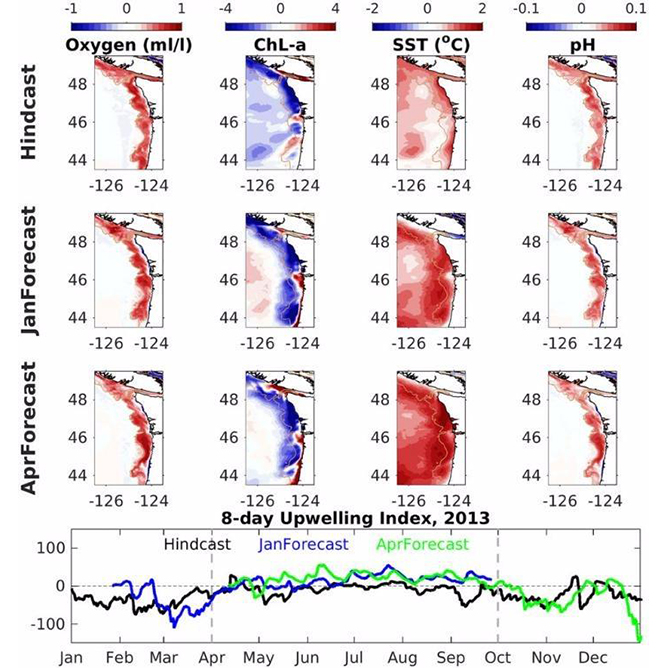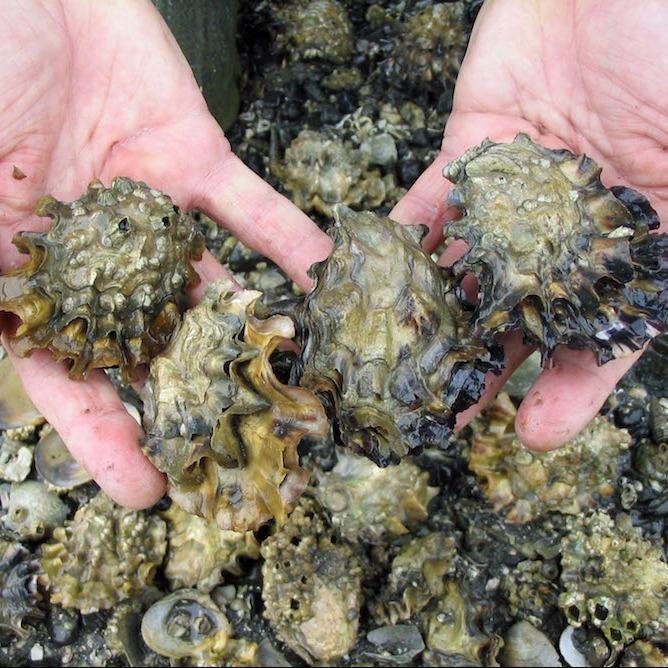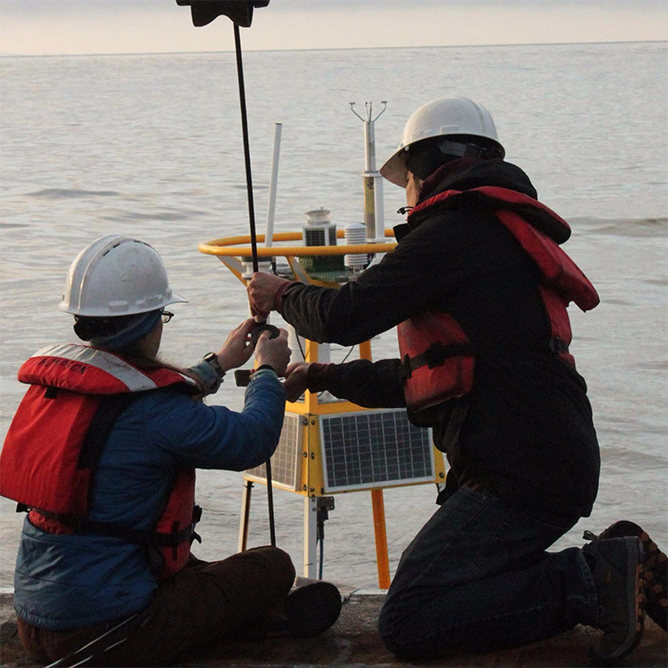Global change is impacting the oceans in an unprecedented way, and multiple lines of evidence suggest that species distributions are changing in space and time. There is increasing evidence that multiple environmental stressors act together to constrain species habitat more than expected from warming alone. Here, we conducted a comprehensive study of how temperature and aragonite saturation state act together to limit Limacina helicina, globally distributed pteropods that are ecologically important pelagic calcifiers and an indicator species for ocean change. We co-validated three different approaches to evaluate the impact of ocean warming and acidification (OWA) on the survival and distribution of this species in the California Current Ecosystem. First, we used colocated physical, chemical, and biological data from three large-scale west coast cruises and regional time series; second, we conducted multifactorial experimental incubations to evaluate how OWA impacts pteropod survival; and third, we validated the relationships we found against global distributions of pteropods and carbonate chemistry. OWA experimental work revealed mortality increases under OWA, while regional habitat suitability indices and global distributions of L. helicina suggest that a multi-stressor framework is essential for understanding pteropod distributions. In California Current Ecosystem habitats, where pteropods are living close to their thermal maximum already, additional warming and acidification through unabated fossil fuel emissions (RCP 8.5) are expected to dramatically reduce habitat suitability.
Pelagic calcifiers face increased mortality and habitat loss with warming and ocean acidification
- Ecological Applications
- May 18, 2022
Citation: Bednaršek, Nina, Brendan R. Carter, Ryan M. McCabe, Richard A. Feely, Evan Howard, Francisco P. Chavez, Meredith Elliott, Jennifer L. Fisher, Jaime Jahncke, and Zach Siegrist. 2022. “ Pelagic Calcifiers Face Increased Mortality and Habitat Loss with Warming and Ocean Acidification.” Ecological Applications 32(7): e2674. https://doi.org/10.1002/eap.2674.
OAP Grant #OAPFY2018.03.PMEL.003
OAP Grant #OAPFY2018.03.PMEL.003


